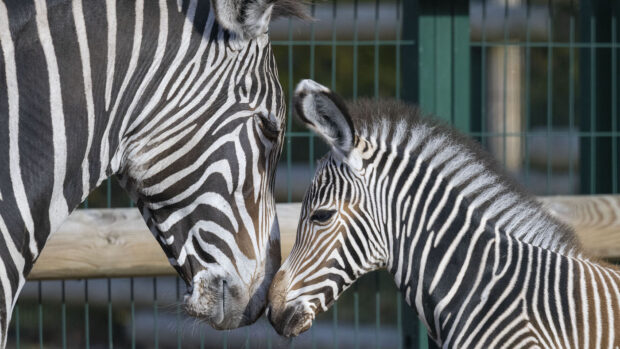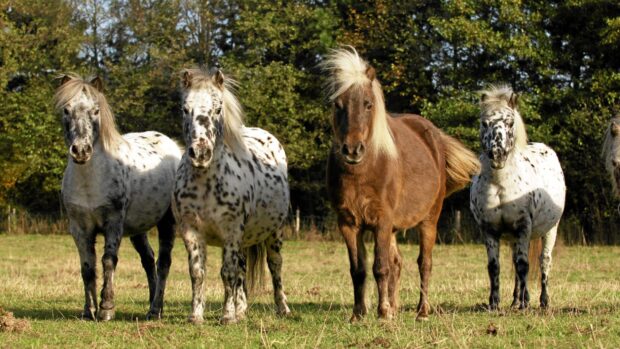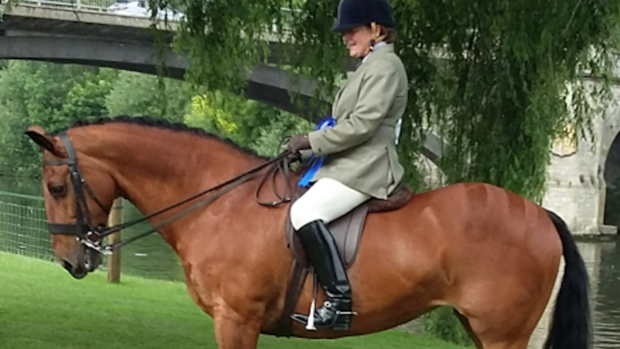Here we bring you a selection of rare horse breeds from across the globe, and everything you need to know about them…
Rare horse breeds
1. The Canadian Horse
As its name would suggest, the rare Canadian horse originates from Canada. It became the country’s national horse in 2002 and is registered as ‘at risk’ by Heritage Livestock Canada due to dwindling numbers.
Canadian horses descend from a load of Spanish, Norman and Breton-bred horses sent to Canada in 1665 by King Louis XIV to his subjects in New France. From those foundation horses, a distinct breed of horse emerged, and became known as ‘Le Petit Cheval de Fer’ or ‘The Little Iron Horse’.
The Canadian Horse Breeders association says the breed is known for ‘its calm and willing disposition, excellent feet, stamina and strength.’ Their height usually ranges from between 14hh to 16hh and while most are black, Canadians come in other colours, including chestnut, bay and palomino.
2. The Dales pony

Lowhouses Bright Star
The Dales Pony is the native breed of the upper dales of the eastern slopes of the Pennine range, from the High Peak in Derbyshire to the Cheviot Hills near the Scottish Border.
The rare breed originates from the crossing of Scotch Galloways, used for pack work in the 17th Century, and native mares. According to the Dales Pony Society: “it was that the black Galloways of the mixed herds eventually superseded the Scotch Galloway, and eventually became the Dales Pony through a series of improvements from several sources.”
Bloodlines from the Norfolk Cob and Yorkshire Roadster also helped develop the Dales pony we know and love today.
According to the Dales Pony Society (formerly the The Dales Pony Improvement Society): “the combination of strength, agility, thrift, hardiness and high courage, with good conformation and a calm, intelligent nature, makes the Dales Pony a first-class riding and driving pony with all the abilities of a true all-rounder.”
Dales ponies have no upper height limit and can be black, brown, grey, bay and roan in colour.
3. The Cleveland Bay

Knaresborough Moon Dust
The Cleveland Bay horse can be traced back to the Chapman horse of the 17th century. They stand at between 16hh to 16.2hh and are solid bay in colour with no white with the possible exception of a very small star. Its a versatile and athletic breed, as both a pure-bred and crossing option.
Initially bred in the Cleveland Hills, Cleveland Bays used by farmers on the land, for riding and as pack animals.
In 2018, it was the most endangered rare native equine breed, with only 64 breeding females left in the UK.
The Cleveland Bay Horse Society is the guardian of the breed. It was formed in 1884 to preserve and promote the breed and continues its role today.
The Royal family have given the breed a great boost; The Queen’s grandfather had been a breeder of Cleveland bays in the 1920’s and The Queen stepped purchased Cleveland Bay colt named Mulgrave Supreme. The Queen still breeds today.
4. The Exmoor pony

Ponies have been on Exmoor since ancient times, and this environment shaped their size, characteristic hardiness, independent spirit and native intelligence.
In 1818, the crown sold the Royal Forest of Exmoor to industrialist John Knight. The outgoing Warden, Sir Thomas Acland, took 30 of the ponies and founded the Acland herd (now known as the Anchor herd) running on Winsford Hill. Farmers from Withypool and Hawkridge, who had worked for the warden, also bought stock at the dispersal sale and founded several herds which still exist.
Although some Exmoor ponies now are bred in studs throughout the country, herds of semi-feral free-ranging ponies still run on the moor.
The late 1940s nearly saw the demise of the Exmoor Pony.
Today, while still a rare breed, they are a popular riding pony for children and small adults. Stallions stand up to 12.3hh, and mares up to 12.2hh. They are bay, brown and dun in colour and carry characteristic mealy markings on the muzzle and around the eye and flanks.
5. The Eriskay pony

Standing up to 13.2hh, the Eriskay pony is among the last surviving remnants of the original native ponies of the Western Isles of Scotland.
By the early 1970s, there were only 20 pure-breds on the remote island of Eriskay, so a dedicated group of people got together in an attempt to increase numbers. The Eriskay Pony Society was founded in 1995.
Today, there are around 420 Eriskays in the world. The Eriskay Pony is classed as critical by the Rare Breeds Survival Trust (RBST).
The predominant colour is grey with the occasional black or bay.
6. The Newfoundland Pony
According to the Newfoundland Pony Society: “The Newfoundland Pony is known for its strength, courage, intelligence, obedience, and common sense.”
During the later part of the 20th century, the estimated population of 12,000 (1970s) dropped to fewer than 100 in the 1980s.
In 1997, the provincial government of Newfoundland passed the Heritage Animals Act of Newfoundland and Labrador. This Act provided legal protections to the Newfoundland Pony by making it illegal to transport Newfoundland Ponies off the Island without export permits. The Act also designated the Newfoundland Pony Society as the public group responsible for registering, promoting and protecting the Newfoundland Pony.
Today, there are 250 registered breeding animals and the population is spread across Canada, with the majority of the ponies located in Newfoundland, Nova Scotia and Ontario.
Their height varies from 11hh to 14.2hh. They have a coat colour of bay, black, brown, chestnut, dun, grey, roan and white only.
7. Akhal-Teke
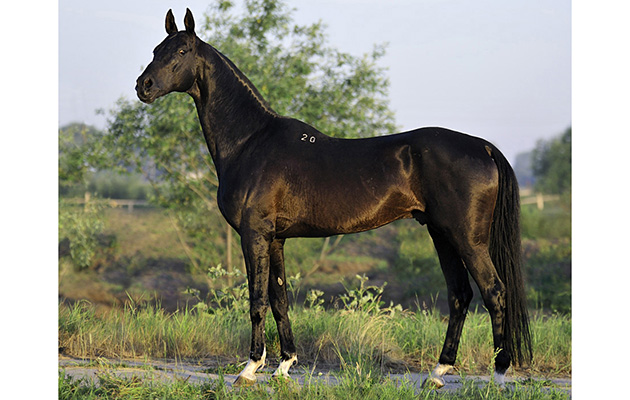
The rare Akhal-Teke was developed for endurance and speed and is one of the oldest domesticated horse breeds.
While commonly found throughout North America and Europe, the breed originated in the Karakum desert of Turkmenistan.
In 1881, Turkmenistan became a part of the Russian Empire and the first official breeding farms of Akhal-Tekes were established. Numbers declined due to the turmoil that marked the early days of Soviet Russia.
The breed was brought to the United States in 1979 and the Akhal-Teke Association of America was founded as a registry.
The slim, athletic horse typically stands between 14hh and 16hh.
Akhal-Tekes are thin-skinned with fine coat and can be of any colour. Many carry a gene for the cream dilution, which can result in palomino, cremello, and perlino coats. Some horses have pale blue eyes. Akhal-Tekes have a metallic sheen to their coats.
8. The Caspian Horse

The story of the Caspian Horse told at HOYS in 2017
Caspians average only 11.2hh but despite their height, theyare known as horses rather than ponies.
According to the Caspian Horse Society: “The Caspian is a horse, not a pony, and therefore should be viewed in the same manner when judging a well-bred horse. That is the limbs, body and head should all be in proportion to each other. Foreshortened limbs or a head out of proportion are faults. The overall impression should be that of an elegant, small horse.”
The rare breed dates back to ancient Persia, at least as far as 3,000 B.C. Experts now believe the Caspian to be the forerunner to the Arab horse and therefore to most of the hot blooded horses in existence today.
They are known to have a spectacular action as well as speed.
9. The Suffolk Horse

The Suffolk Horse is the oldest breed of heavy horse to exist in its present form.
The earliest stud book of any heavy horse breed, and all modern Suffolks, are descended from just one horse, Crisp’s Horse of Ufford, which was born in 1768.
During the First World War, the strong horse was a popular working animal and there were 1000s of Suffolks residing throughout East Anglia. They were known for their ability to be used for draught work and forestry
The rare breed declined rapidly when farmers swapped horses for tractors and machinery, and in 1966 there were only nine Suffolk foals registered.
Today, they are a popular cross to produce heavy sports and show horses, and they are being increasingly seen in ridden heavy horse classes.
10. The Hackney
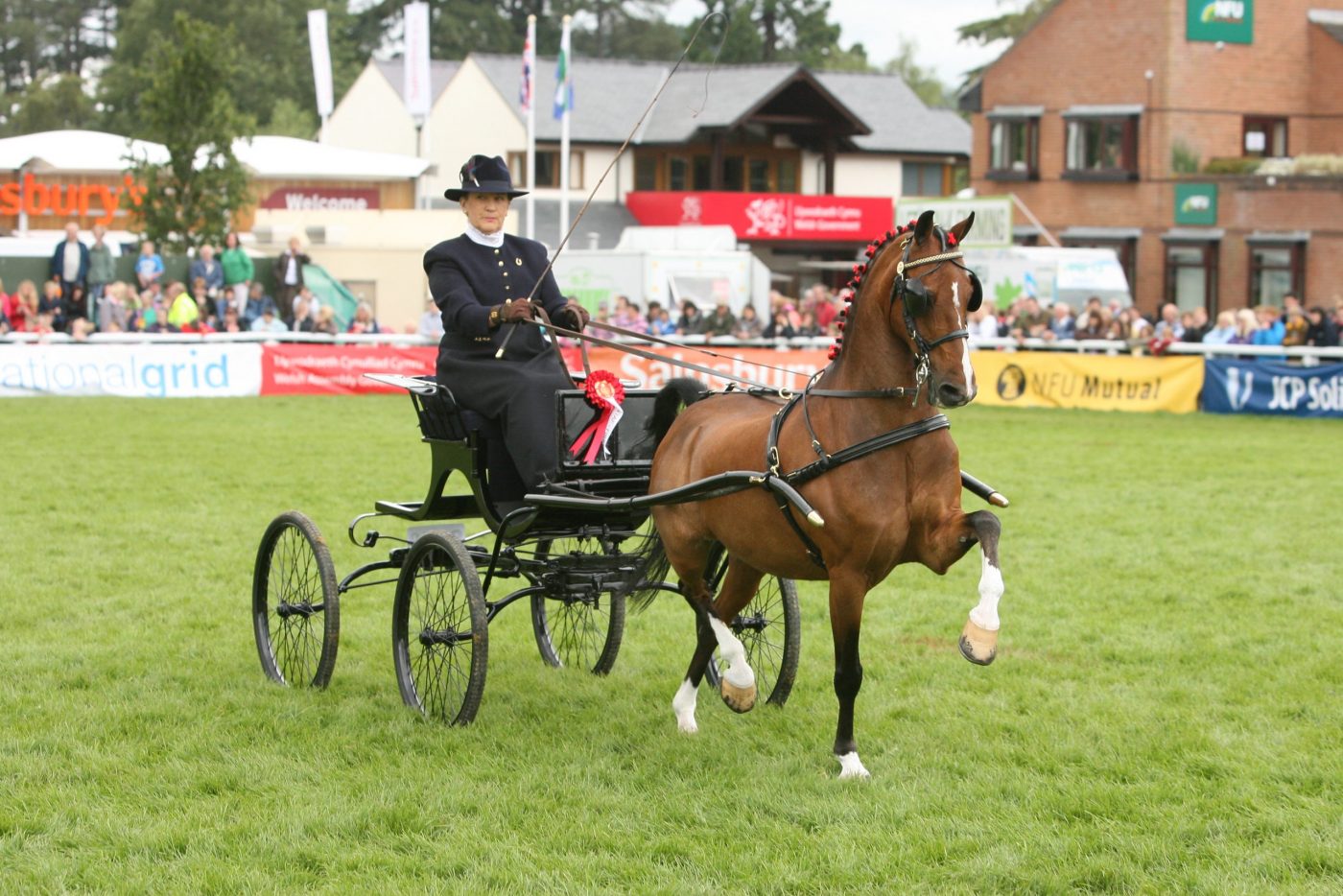
The British Hackney had its origins in the Norfolk and Yorkshire Roadsters (trotting horses) of the 18th and 19th centuries, but is first mentioned in medieval times.
Early Thoroughbred stallions had a great influence on the breed. According to the RBST: “Following improvements in the roads during the 16th and 17th century there was an increased demand for carriage horses and the highest status symbol was to be seen out in a stylish equipage with proud high-stepping horses.”
In 1883, the Hackney Horse Society and Stud Book was formed.
The Hackney horse stands from 14hh to 16.2hh, while the pony stands between 12.2hh to 14hh. Their coat may be a range of solid colours and many boast white markings.
The high-stepping breed is known for its ability to trot at high speed for extended periods.
11. The Sorraia
Sorraia Horses are a remnant population of an indigenous, South Iberian wild horse, which survived in the formerly inaccessible lowlands of the river Sorraia in Portugal until the early 1900s.
The Iberian scientist and horse expert Dr. Ruy d’Andrade discovered these horses in 1920 and is responsible for their preservation.
Today, there are only 200 Sorraias, most of which kept are in private hands.
All Sorraias descend from only 11 or 12 animals that d’Andrade secured in the 1930s, and in-breeding is therefore incredibly high.
12. The American Cream Draft Horse
The American Cream Draft is a relatively new breed and is the only draft breed to have originated in the United States.
It is believed that the Cream traces its roots back to a draft-type mare named Old Granny. She is believed to have been foaled around the turn of the last century in Iowa and was cream in colour.
There are around 250 horses worldwide.
The American Cream Draft Horse was recommended for recognition by the National Stallion Enrolment Board in 1948. In 1950 they were recognised as standard by the Iowa Board of Agriculture.
Its most notable characteristic is its coat colour, which ranges from pale cream to a rich golden colour, with a white mane and tail.
13. The Curly Horse (American Bashkir Curly Horse)

A Curly Horse comes in all sizes, colours, and types but all carry a gene for a unique curly coat of hair.
Curlies are claimed to be the only hypoallergenic horse breed. They originated in North America and there are a few 1000 of them in the world today.
In 1971 the first curly horse register was formed, The American Bashkir Curly Registry.
Most of today’s curly horses have ancestry to one or more of the three stallions Copper D, Curly Jim or Eli Bad Warrior’s sire (name unknown).
The British Curly Horse and Pony society was founded in 2010.
14. The Marwari Horse
Developed in the Indian region of Marwari (Jodhpur), the Marwari Horse descends from the mounts of the Rajput warriors. It is best known for its inward-turned ear tips.
Because the breed was rare and faced extinction, there was an export ban placed in the 1930s and no Marwari horses were able to leave India. In 2000, a first shipment of six horses was sent to horsewoman Francesca Kelly in the United States.
Today, the breed is still rare with fewer than 5,000 purebred horses in the entire world.
The Marwari has been traced back to Arabian and Mongolian horses. Their inward turning and sometimes touching ears are linked to the Kathiawari horse.
15. German Black Forest Horse
As of 2017, it was recorded that there was a population of 88 stallions and 1,077 mares.
They originate from the Black Forest of southern Germany, where breeding dates back to the 15th century. They were originally used for farm work and forestry.
Some other names of the rare German Black Forest Horse include Schwarzwälder Füchs, Schwarzwälder Kaltblut, Wälder Horse, and Saint Märgener.
One of the key breeding programmes is at the Marbuch Stud horse farm in Germany.
They usually range between 14.2hh and 16hh in height.
They are cold-blooded, light-draft horses and are characterised by a golden mane and rich chestnut coat; no other colour may be registered.
You may also be interested in…

Delight as heavy horse centre welcomes rare black Clydesdale filly

Suffolk foal who broke leg in multiple places recovers thanks to vet’s skill
“On the day his accident happened I really thought we were going to lose him, so it is lovely to

Joy as zoo welcomes safe arrival of two extremely rare foals
The zoo carries out conservation work to protect endangered species

Seven equine breeds classed as ‘highest concern’ in Rare Breeds Survival Trust watchlist
The 2021/22 watchlist, published this week (8 April), has been updated with new categories: priority, at risk, UK native breeds

Subscribe to Horse & Hound magazine today – and enjoy unlimited website access all year round
Horse & Hound magazine, out every Thursday, is packed with all the latest news and reports, as well as interviews, specials, nostalgia, vet and training advice. Find how you can enjoy the magazine delivered to your door every week, plus options to upgrade your subscription to access our online service that brings you breaking news and reports as well as other benefits.


